Smoking chicken is great for beginners since this light meat cooks fast. When searching for the best wood for smoking chicken, finding one with a complementary flavor is key. Here are some of the best options along with chicken smoking tips, recipes, and more!
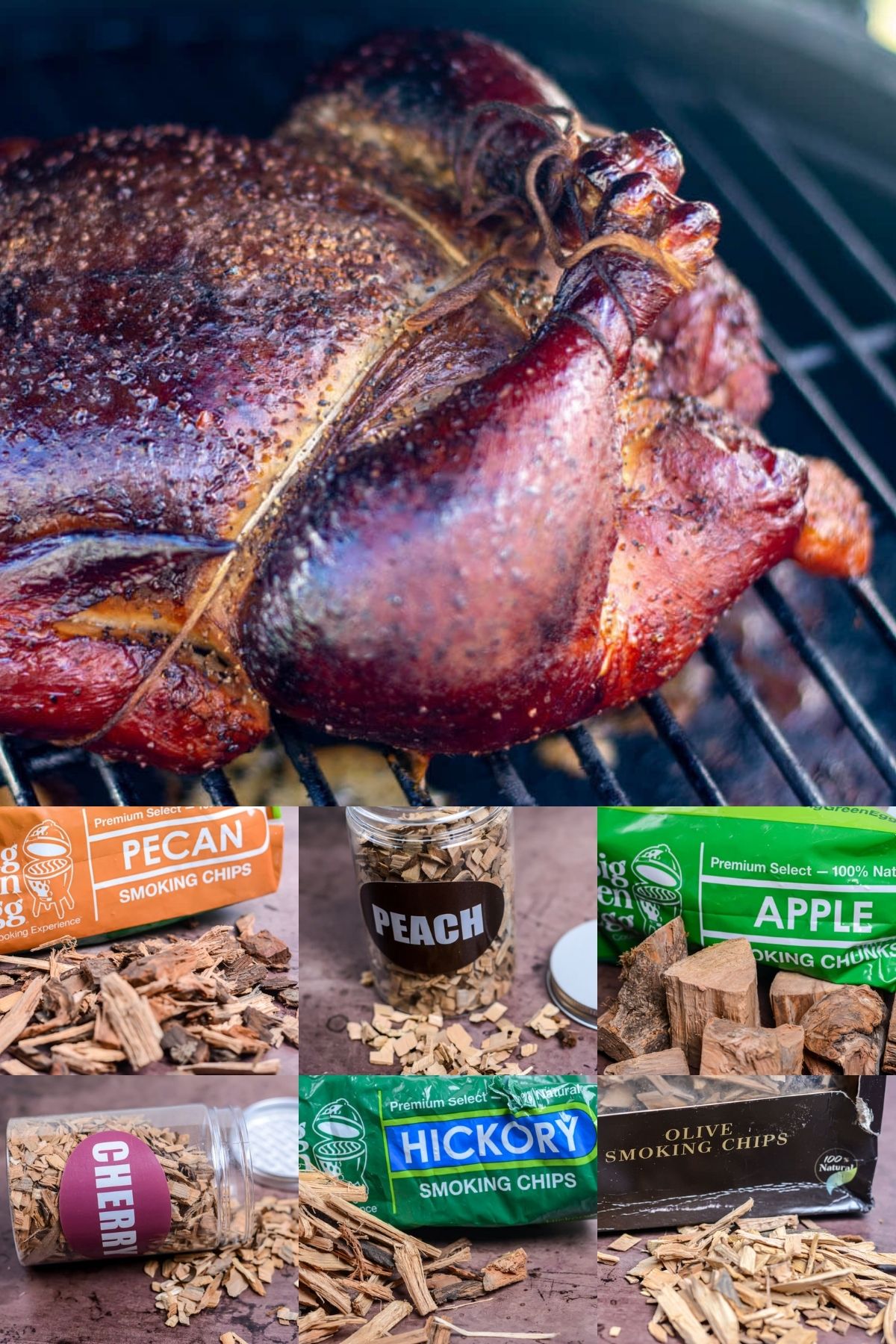
Chicken meat is delicate and mild-flavored, so it works perfectly with a variety of rubs, marinades, and (of course) whatever wood smoke you choose.
It’s also cheap and cooks fast, which makes it perfect if you want to try your hand at smoking meat and experiment a little.
These are my favorite types of wood for smoking chicken and you can use them to create interesting combinations for some pretty unique flavors!
Highlights
There are several woods that work wonderfully to smoke chicken. Here’s a quick table, but read on for more in depth discussion.
| Wood | Description |
|---|---|
| Maple | Sweet flavor and long burns. |
| Peach | More intense flavor for a fruit wood. |
| Apple | Classic and easy to find. Mild flavor. |
| Cherry | Mild flavors. |
| Pimento | Unique, clove-like flavor. |
| Hickory | More intense and robust flavor. |
| Pecan | Slightly nutty flavor. |
| Olive | Earthy notes, but less intense. |
Maple
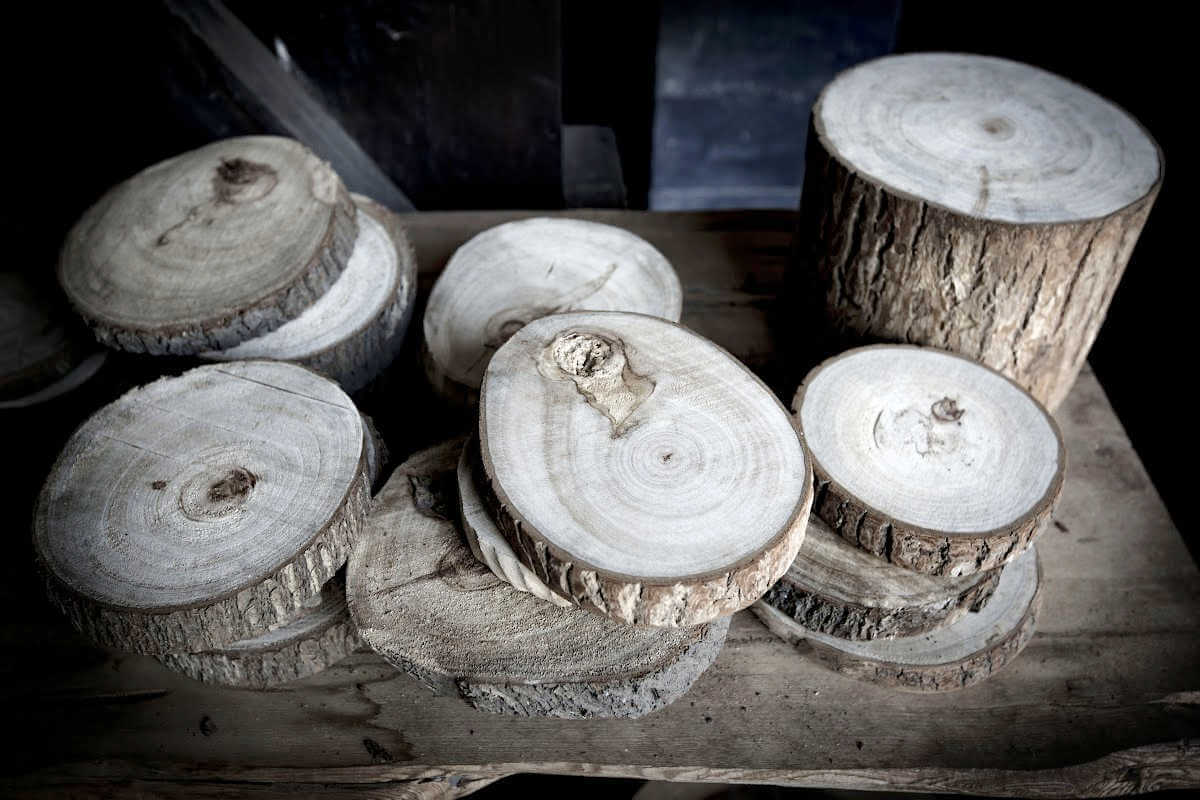
Since it’s so often paired with pork and produces dark smoke, it’s easy to overlook maple when it comes to smoking poultry.
The truth is, this wood goes so well with chicken that I decided to talk about it first!
Acer or maple trees don’t just provide yummy maple syrup, they’re also the source of maple wood.
Very common in North America, maple is a crowd pleaser at BBQs thanks to its mild smoky flavor and subtle sweetness.
For chicken, maple offers the perfect smoking strength. It’s bolder and sweeter than applewood if you’re looking for an extra kick, yet not nearly as heavy as cherry or pecan if you’re after a subtler taste profile.
Maple enhances the natural flavor of chicken and adds a pleasant, sweet aroma without overpowering it.
It’s a great wood for beginner smokers, even more so because it can burn steadily for a long time.
If you’re a BBQ enthusiast just starting out with smoking, try these amazing smoked chicken quarters. They go well with maple wood and it’s a relatively quick smoke ready in two hours tops!
Peach
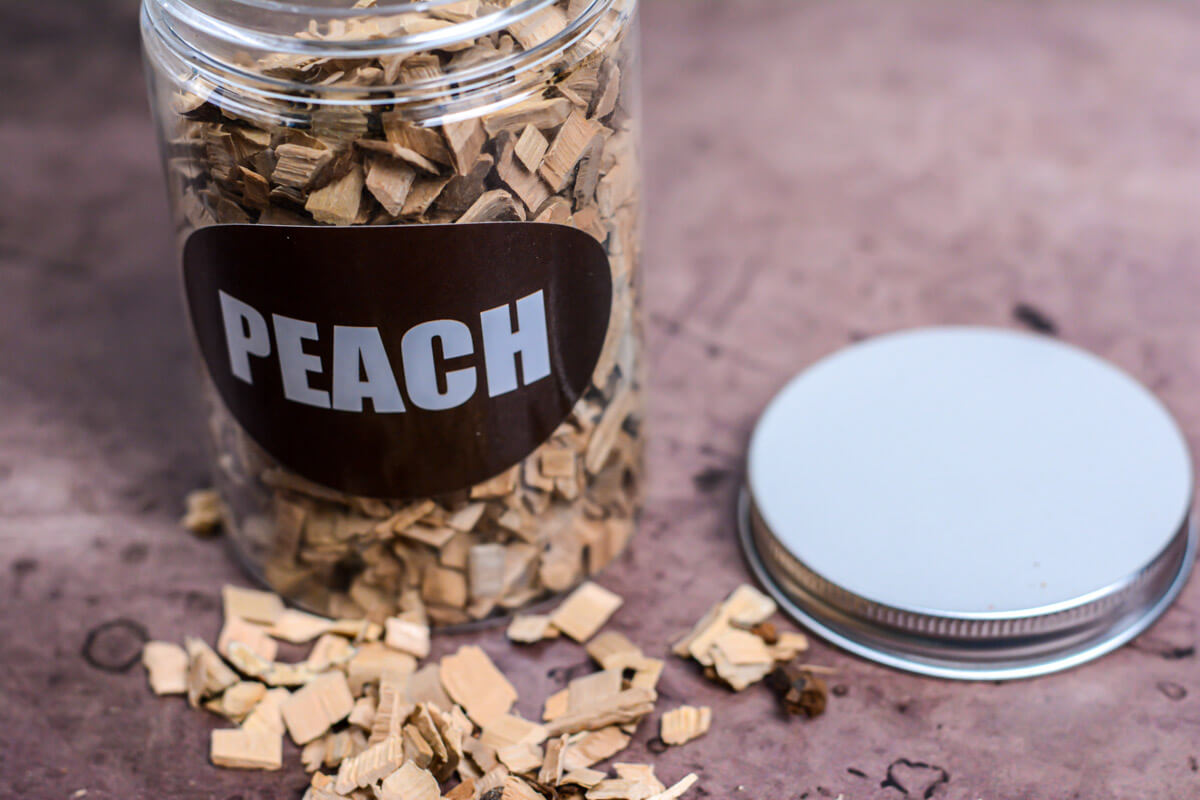
Can you guess where peach wood comes from? That’s right, peach trees. Rocket science here, right?
As wood that’s sourced from a fruit tree, you’d think its flavor would be very mild.
However, peach will surprise you with a strong kick that’ll quickly become one of your favorites for smoking chicken.
It may not be as dense as oak or hickory, but it’s firm enough to go into the smoker.
Paired with chicken, it delivers a unique fruity and sweet flavor that gets more intense the longer you let the meat cook over it.
Peach wood smoked chicken goes incredibly well with sweet sides and sauces. Its aroma is sweet and fruity, so it’ll smell like you’re whipping up a dessert.
This type of wood is also beginner-friendly, as it can burn steadily for extended periods. It’ll leave your chicken with a pale golden shade and a Southern feel.
Want to try your hand at smoking a whole chicken, but it seems intimidating? Try this smoked spatchcocked chicken as a simpler approach.
This method will have you remove the spine of the chicken, flattening it for a shorter smoke time.
Apple
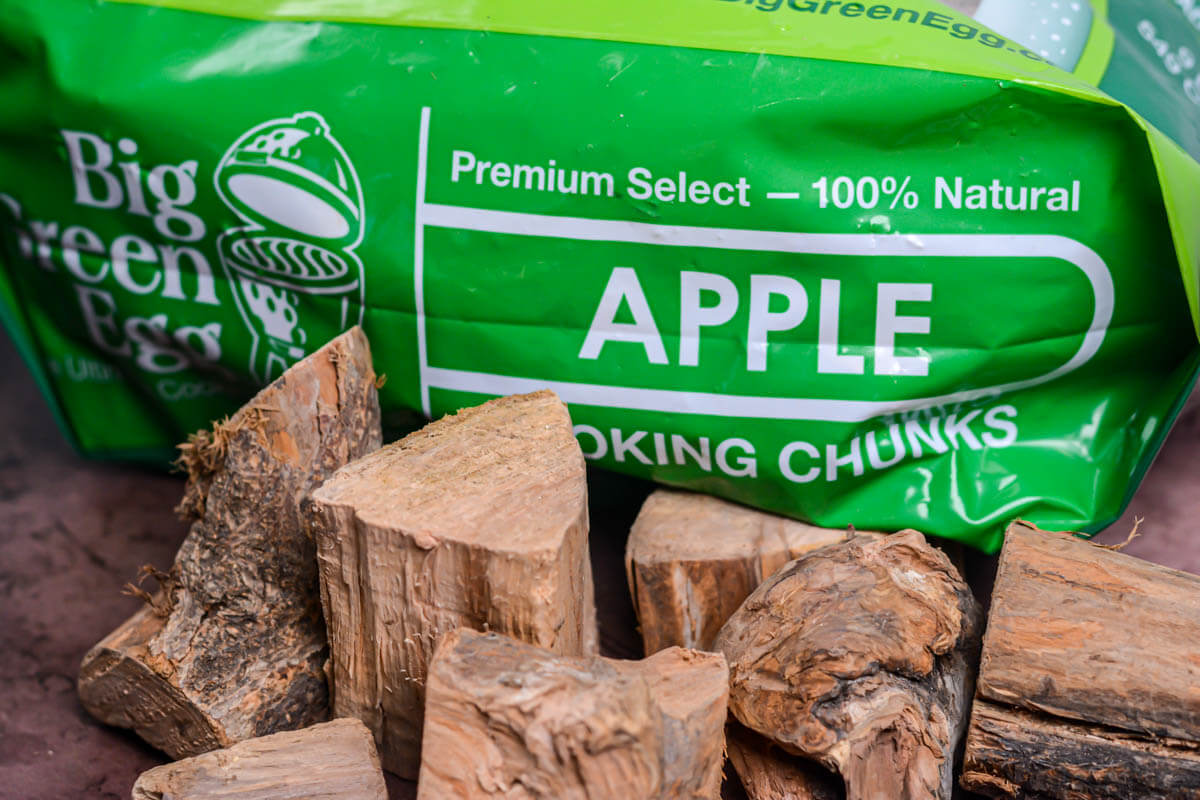
Another fruit wood you can use to smoke chicken is apple wood.
It offers a very mild smoky flavor with hints of sweetness that won’t overpower the delicate meat.
That said, apple alone can be too subtle for some pitmasters. If you feel the same, don’t hesitate to mix it with a stronger type of wood such as hickory or maple. Sometimes those blends are amazing!
It’s still worth trying apple wood alone first, just to see if the smoky flavor it brings is to your liking.
These smoked chicken wings are the perfect way to experiment with apple wood as they’re ready in just 90 minutes.
Cherry
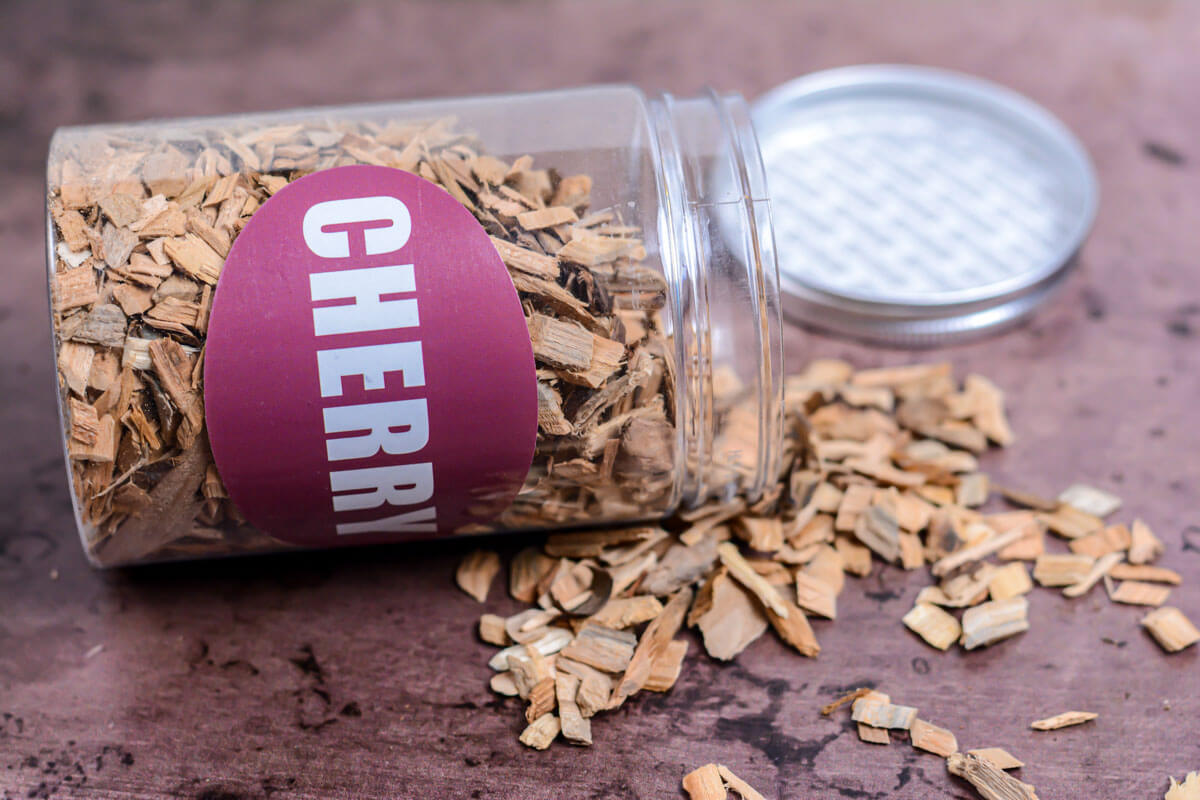
Cherry wood is a great option if you want to give your chicken some smokiness and subtle sweetness.
The mild fruity flavor of this wood is ideal for chicken as won’t overshadow the meat’s taste.
What’s unique about it though, is its ability to add a nice color to meat upon smoking. It’ll leave the outside of your chicken a tempting dark red. Look at that first photo in this article. I could use this all the time just for the gorgeous results.
Mixing cherry wood with maple, hickory, or oak is a great way to boost the intensity and complexity of its flavor profile.
Pimento
Pimento is another wood that pairs nicely with chicken. It comes from Jamaica and it can be a bit tricky to get your hands on, but it’s very much worth the trouble.
The first thing you’ll notice about its taste is how different the smoky meat tastes.
It infuses the meat with a distinctive clove-like flavor with hints of bay leaf mixed with eucalyptus. It really is amazing and something out-of-the-ordinary to try.
The aroma of pimento is similar to its flavors; rich and pleasantly invigorating.
I find it complements ingredients in most dry rubs and marinades that you’d typically use on chicken.
Not only does pimento wood work great with chicken, but it’s also very versatile.
As such, one of my favorite things about this wood is that you can save some of it to use on pork and brisket.
This is because pimento burns slowly, so it can sustain a long cooking period of meats that require spending many hours on the grill or inside the smoker.
Hickory
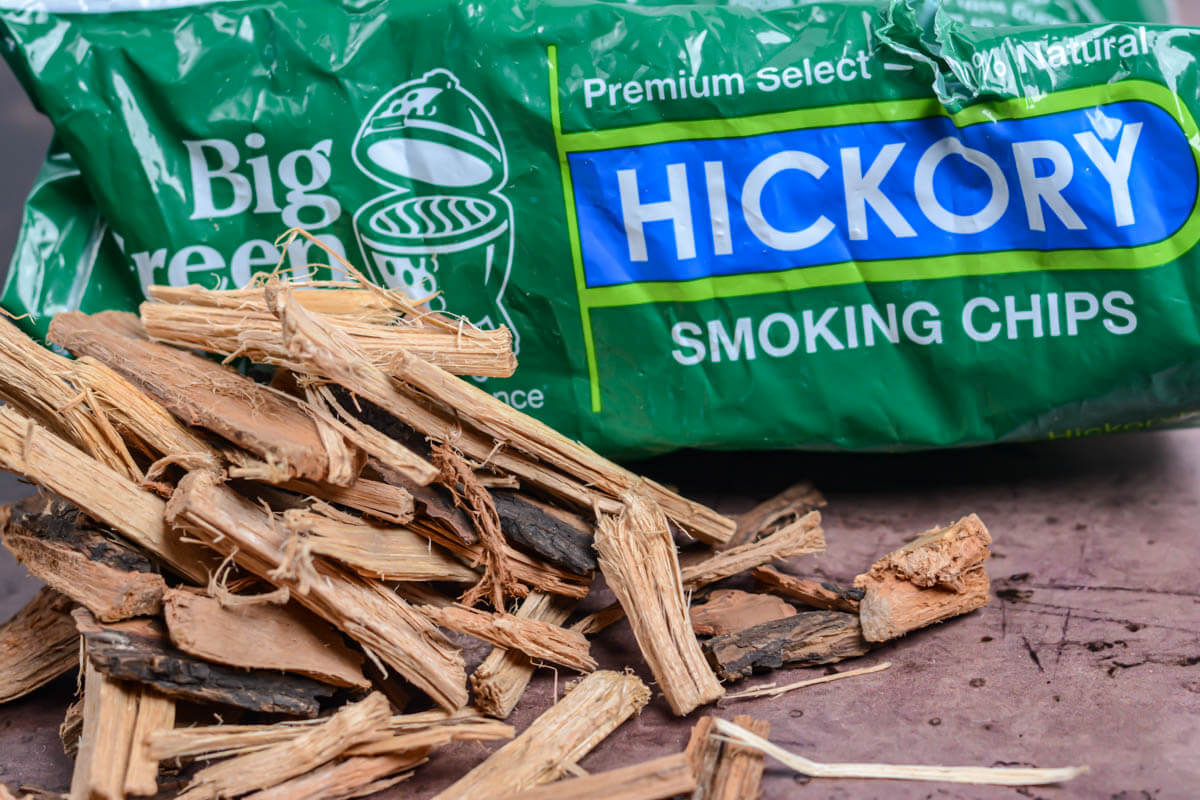
Hickory is one of the most widely used woods when it comes to smoking poultry.
This type of hardwood is native to the East Coast and offers a strong, distinct flavor that’s rustic and traditional.
The smoky, sweet, and slightly nutty or bacon-like taste of hickory goes well with chicken. It’s less likely to overpower the meat, especially when compared to classic options such as mesquite or oak.
However, it’s easy for newbies to go overboard with this, especially if working with a smaller chicken.
Starting with small amounts of wood and gradually adding more is the best approach to avoid a bitter flavor. You don’t need large billowing clouds of smoke. Aim for a slight trickle, especially for longer cooks.
You can also mix hickory with cherry or apple wood to mellow it down.
Hickory has a long burning time even at high temperatures and produces dark smoke for extra complexity.
Pecan
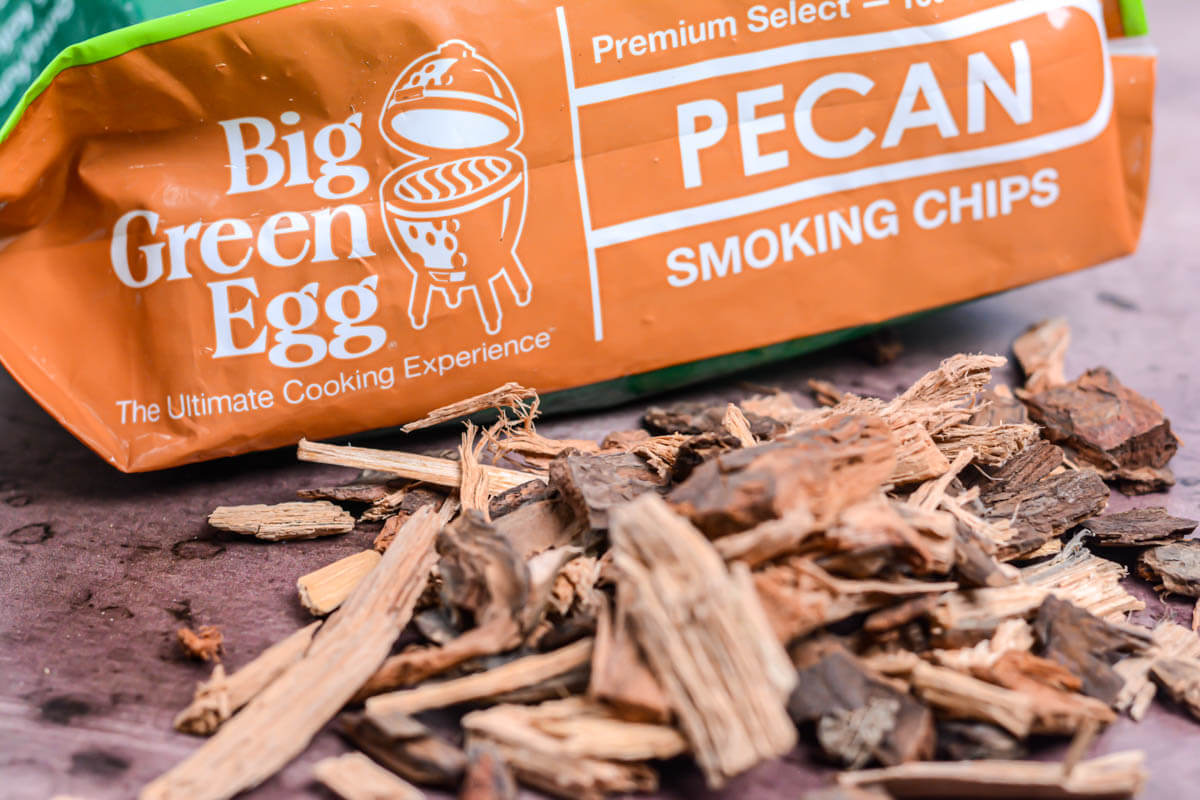
If you want a fruity taste profile but with extra smokiness, consider smoking your chicken over pecan wood.
This hardwood has a rich and sweet flavor characterized by a strong nutty taste and smell.
While it’s more powerful compared to other fruit woods, it’s still less intense than mesquite or hickory.
Pairing pecan wood with chicken doesn’t just boost the meat’s natural flavor with savory hints, but it also offers true Southern BBQ vibes.
Try pecan wood with our smoked Cornish hens recipe. They’re smaller than standard chickens so the smoking time will be shorter too!
Olive
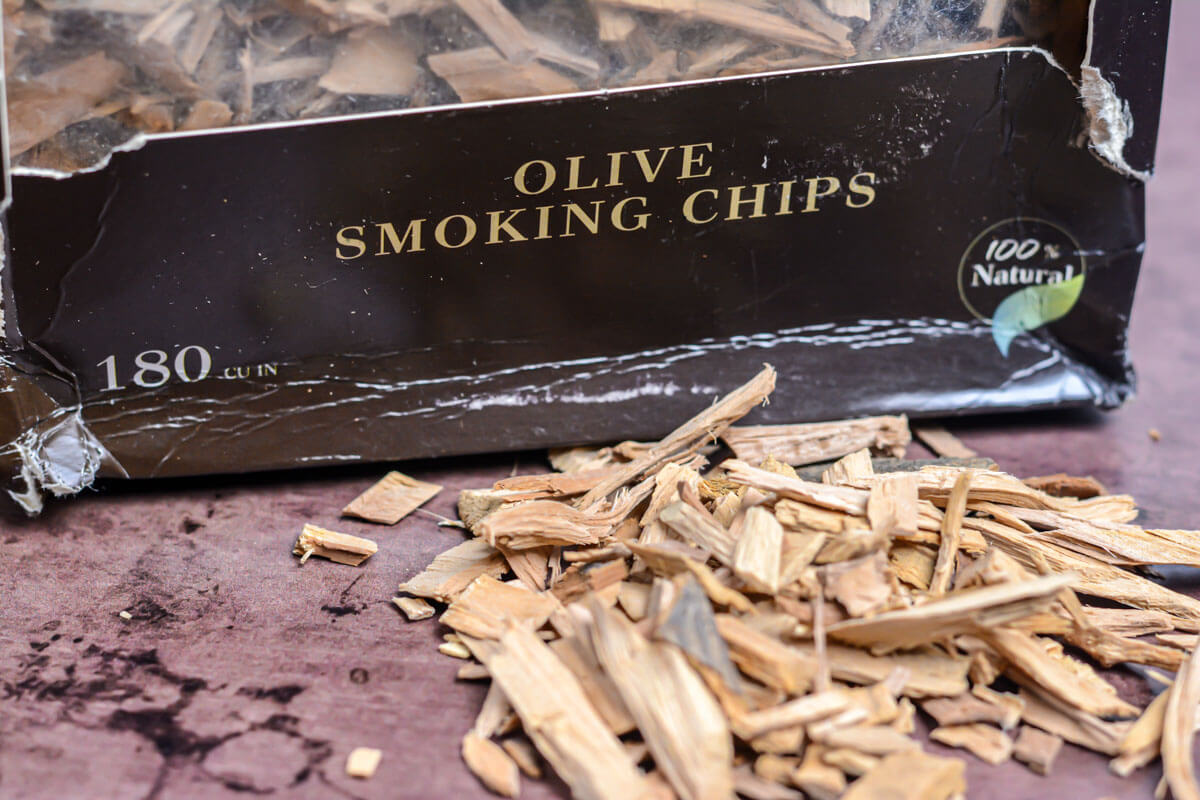
Last but not least, olive wood can be a fantastic smoking wood for your chicken even though not many people use it.
I love olive wood because it has an earthy, smoky flavor similar to mesquite wood but less intense so it won’t overpower the chicken.
💡 Tips For Choosing Wood Size
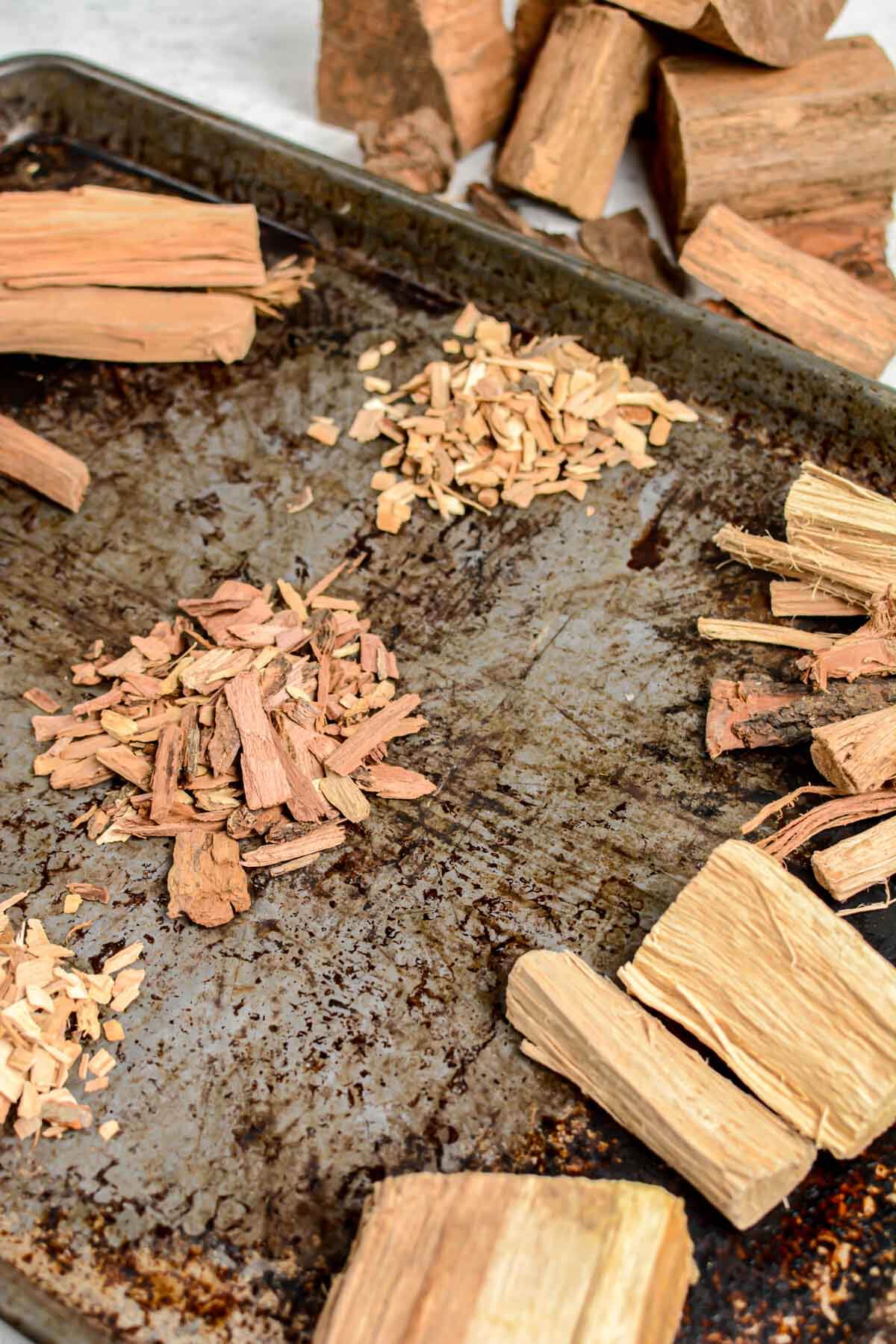
Depending on the type of smoker or grill you’re using, you’ll need to choose a suitable size/style of wood for smoking. Here’s what you need to know:
- Chunks: measuring up to four inches, this size is most suitable for household full-size charcoal grills and smokers. I try to stick to these for my Big Green Egg.
- Chips: if you’re cooking in a gas or electric grill/smoker, chips are the way to go. They produce smoke quickly and are easy to store.
- Disks: this style of smoke wood is best paired with electric smokers.
- Sawdust: if you’re using a handheld, electric, or stovetop smoker, this form of wood can offer instant smoke.
- Pellets: these are specially designed to use in pellet smokers.
- Logs: reaching up to 18 inches long, this is the largest size of smoke wood. It’s best used in grand smokers or on a commercial scale and it takes the longest to burn.
🍗 Tips For Smoking
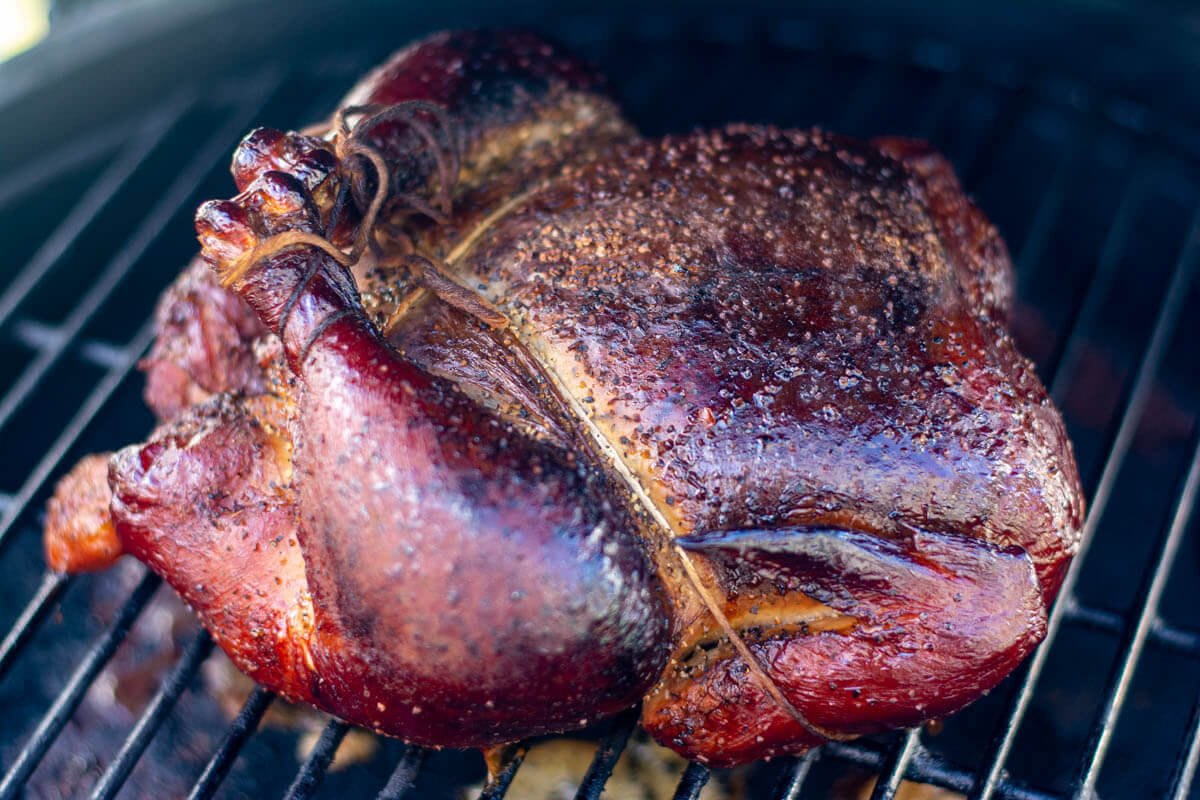
One of the most common issues when smoking chicken is ending up with a dry bird with leathery skin.
Here are some clever things you can do to get that perfectly juicy chicken, crispy skin, and balanced smoke flavor
Brine the chicken. This will tenderize the meat and help it remains juicy throughout the smoking process.
Whether you opt for a wet brine like we did for these smoked Cornish hens, or a dry brine like for our whole smoked chicken, it will bring out all the best flavors in the meat.
Dry the Bird. Before firing up your smoker, make sure the bird is dry. You can use paper towels to pat it dry and also allow it to air dry in the fridge for a few hours or overnight.
If the chicken’s skin is dry when it goes into the smoker, there’s a better chance it will cook to a delicious crisp!
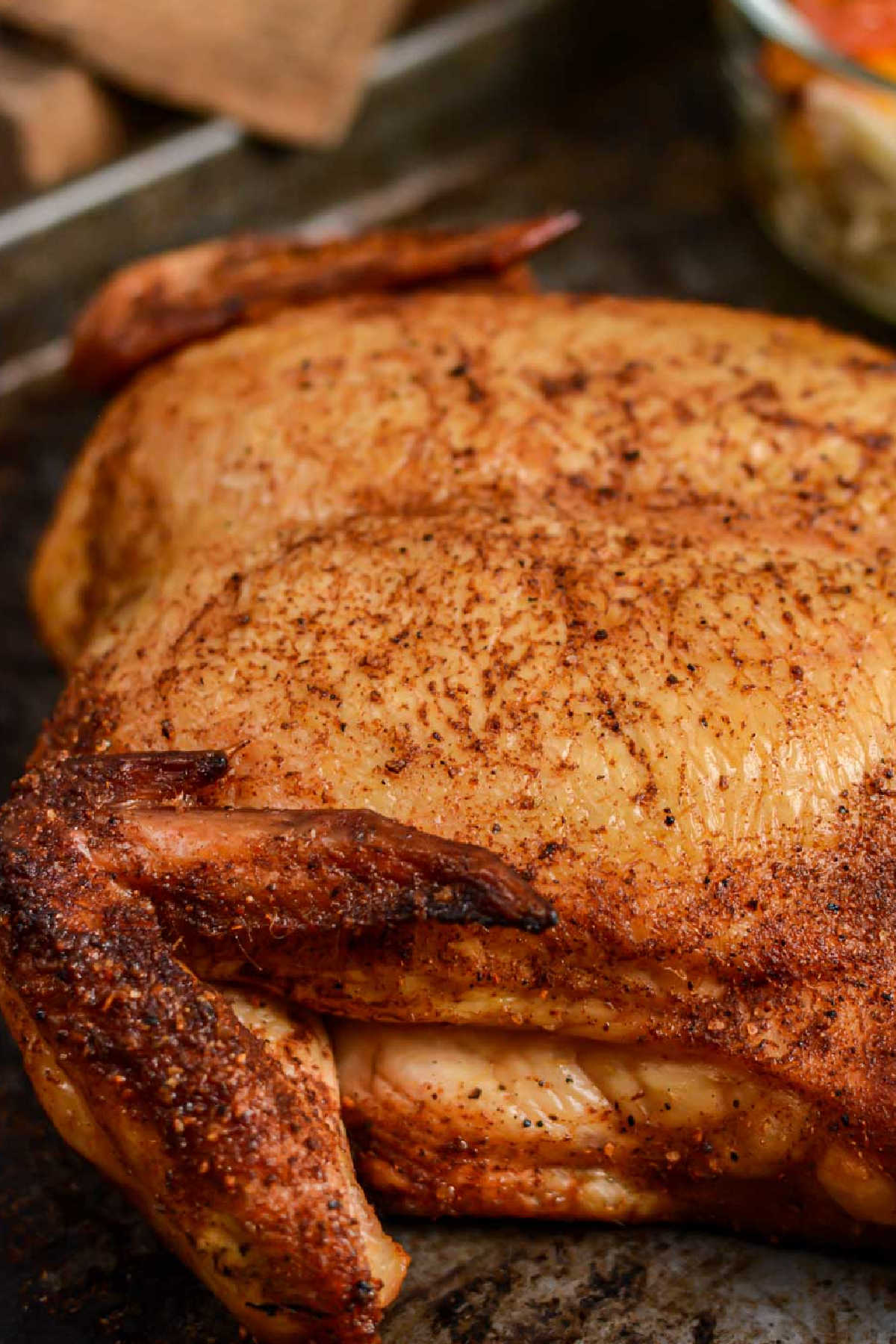
For more even cooking and shorter smoking times, spatchock the chicken. This technique essentially flattens the bird, allowing better heat distribution, and the smoke will easily wrap around the meat, resulting in an even, quick cook.
Use low smoking temperatures. We normally smoke chicken at temperatures between 225-275°F.
Remember, chicken meat is delicate and cooks easily, so using higher temperatures can cause the bird to dry out.
Always rely on the chicken’s internal temperature to find out if it’s ready. To be properly cooked, chicken needs to reach an internal temperature of 165°F as per USDA’s official recommendations.
Of course, you will need a meat thermometer to monitor your chicken’s temperature, and I absolutely recommend investing in one.
You can also remove the chicken from the smoker at 160°F, let it rest tented in foil for 10 minutes, and the residual heat will have it reach the target internal temperature.
The resting period is also very important for the final texture of the meat. It will allow the internal juices to redistribute, resulting in moist and tender chicken.
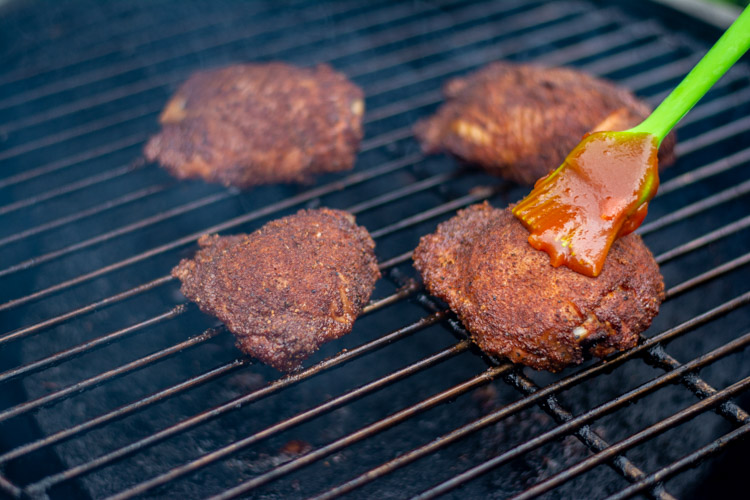
If you want to baste the chicken with BBQ sauce, do it when the chicken is almost ready. The sauce coating can burn and turn bitter if applied too early.
For these smoked chicken thighs, we basted them after they reached the internal temperature of 165°F and smoked them for another 10-15 minutes.
Even if you wet brined your chicken, it’s still worth applying a dry rub before smoking.
The dry rub will ensure the skin gets extra crispy and the seasonings will also let the smoke better adhere to the surface of the chicken.
Wrap Up
It should be clear to you by now there’s no single choice for the best wood for smoking chicken.
It’s not only a matter of flavor preference but also comes down to the type of smoker or grill you’re using.
When you’re in a pickle, refer to our free printable wood smoking cheat sheet. It will help you quickly make an informed decision so you can get smoking faster!
Any of the smoke wood discussed today will beautifully complement chicken meat, so don’t be afraid to try new flavors and mix up your recipe!
Related Wood Selection Articles

Ginny Collins is a passionate foodie and recipe creator of Savor and Savvy and Kitchenlaughter. Indoors she focuses on easy, quick recipes for busy families and kitchen basics. Outdoors, she focuses on backyard grilling and smoking to bring family and friends together. She is a lifelong learner who is always taking cooking classes on her travels overseas and stateside. Her work has been featured on MSN, Parade, Fox News, Yahoo, Cosmopolitan, Elle, and many local news outlets. She lives in Florida where you will find her outside on the water in her kayak, riding her bike on trails, and planning her next overseas adventure.






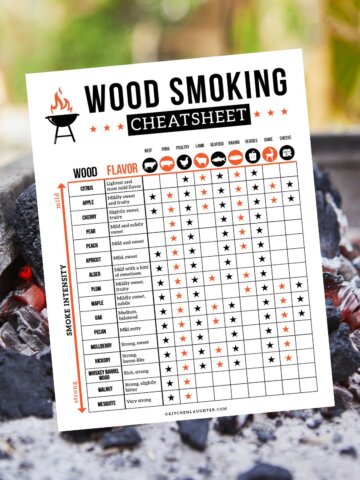
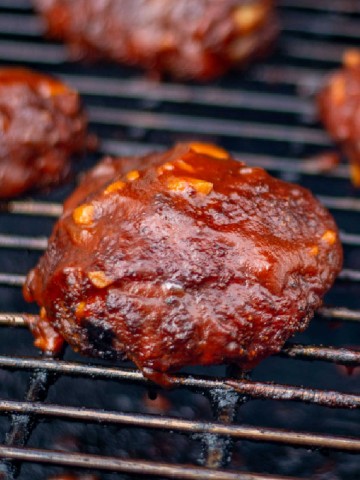
Leave a Reply